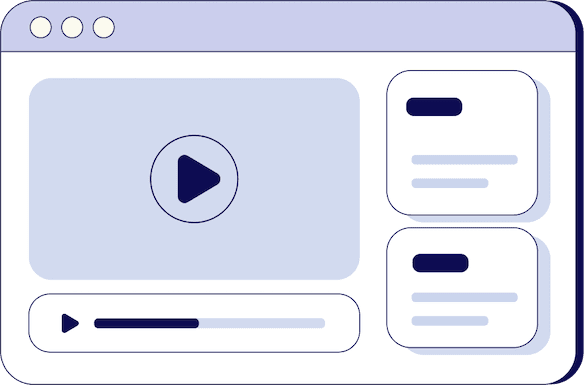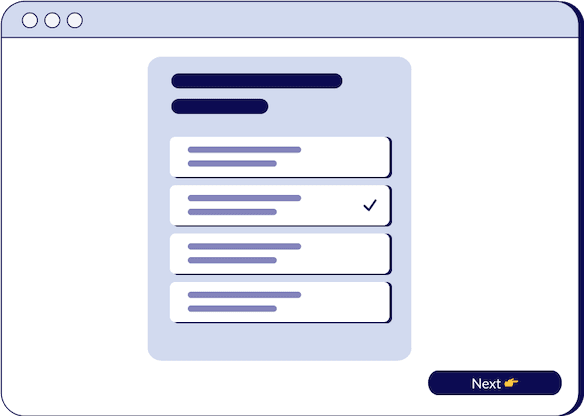
Challenges - GPCTBACI
Matt Doyon
Chief Executive Officer @ Triple Session

- duration
- 14 min
- Average Score
- 64%
- Stars
- 5
Did you know that challenges form the cornerstone of successful sales engagements? In fact, challenges represent the 'C' in the sales methodology, GPCBACI, and they are the key motivator for a buyer to engage in a conversation with a sales representative. Without challenges, there would be no impetus for change or consideration of a new offer. Let's dive into the significance of challenges and how sales reps can navigate them effectively.
Understanding Challenges: A Detailed Definition
Challenges, in the context of sales, refer to the underperformance of a plan caused by a breakdown at the physical, human, or organizational level. To effectively address challenges, it's crucial to delve into these three bedrock sources:
1. Physical Challenges: The "What"
Understand the client's working environment, whether it's their office setup or the dynamics of their target market. Explore the tools they use, their investments, and the physical elements influencing their plan execution.
2. Human Element Challenges: The "Who"
Dive into the roles and skill levels of individuals involved in the plan. Identify internal and external team members, assessing their credibility and understanding how human capital is utilized.
3. Organizational Challenges: The "How"
Explore the processes, methodologies, and integrations in place to execute the plan. Understand how the organization connects different elements to ensure smooth operations and goal achievement.
By dissecting challenges into these three elements, sales reps gain valuable insights into the client's pain points and areas requiring optimization.
Connecting Challenges to the Sales Conversation
Now that challenges are defined, let's explore how they fit into the broader sales conversation using the first half of GPCRBACI:
1. Goals: The "What"
Identify the client's goals and the outcomes they aim to achieve. Understand the milestones and benchmarks they are striving for.
2. Plan: The "How"
Examine the client's existing plan and how they are putting people and systems in place to accomplish their goals.
3. Challenge: The "Why"
Uncover the challenges hindering the client's plan and discuss the broader challenge they aim to overcome.
4. Timeline: The "When"
Understand the client's timeline for achieving their goals. Explore the urgency and importance of their objectives.
Connecting challenges to these elements sets the stage for a meaningful sales conversation that addresses the client's immediate concerns and aspirations.
The Seven Key Benefits of Working with Challenges
Effectively unveiling and addressing challenges with clients brings about seven key benefits that significantly enhance the sales process:
1. Early Customer Value
Addressing challenges early in the conversation resonates with customers who prioritize making their plans work efficiently.
2. Value in Problem-Solving
Attaching your offer to solving a specific challenge adds overwhelming value to your customer's perception of your product or service.
3. Cost Context
Understanding the cost of living with a challenge provides context to your pricing, emphasizing the opportunity cost of not working with you.
4. Engagement and Attention
Discussing challenges keeps clients engaged and attentive throughout the sales process, ensuring a more impactful value proposition.
5. Focus on the Present
Challenges bring the conversation to the present, making it more tangible and relatable for the client.
6. Increased Win Rate
Navigating challenges effectively increases the likelihood of clients sticking with you through the sales process.
7. Higher Average Sale Price
Selling solutions to current challenges is more valuable than selling future possibilities, resulting in an increased average sale price.
Understanding and leveraging these benefits positions sales reps for success in addressing client challenges.
Initiating the Challenges Conversation
While challenges are crucial, broaching the subject effectively, especially with clients unfamiliar with you, requires strategic approaches. Let's explore four strategies based on the client's inbound or outbound engagement and the tone of the conversation.
Inbound Positive
When clients approach with a positive mindset, focus on their goals first. Understand their plan and seamlessly transition into discussing challenges.
Inbound Negative
For clients presenting challenges upfront, dive directly into understanding the problem, its timeline, and the desired success outcomes.
Outbound Positive
Initiate conversations by acknowledging the client's goals, using positive positioning statements, and then smoothly transition into discussing potential challenges.
Outbound Negative
When reaching out to discuss challenges proactively, start by identifying a plan, highlighting a common challenge, and exploring the client's timeline and goals.
In conclusion, challenges are the driving force behind successful sales engagements. Sales reps who master the art of uncovering and addressing challenges effectively are poised for success. By understanding the nuances of challenges, connecting them to the broader sales conversation, and leveraging the benefits they bring, sales reps can navigate the intricacies of client interactions with finesse. To delve deeper into this topic, watch the session on challenges in sales and elevate your sales strategy today.
How Triple Session works
Training, Testing, & Feedback
Triple Session's proven formula accelerates your sales performance through consistent, organized practice, backed by measurable results.

Bite-Sized Knowledge
Our expert-led video sessions simplify complex sales concepts into easy-to-digest 5-15 minute videos for better retention.

Test Your Understanding
After each session, there will be a quiz to test your understanding and help you improve on any areas that need more attention.

Evaluate and Grow
Get progress snapshots after each quiz to track your improvements and achieve your sales mastery goals.